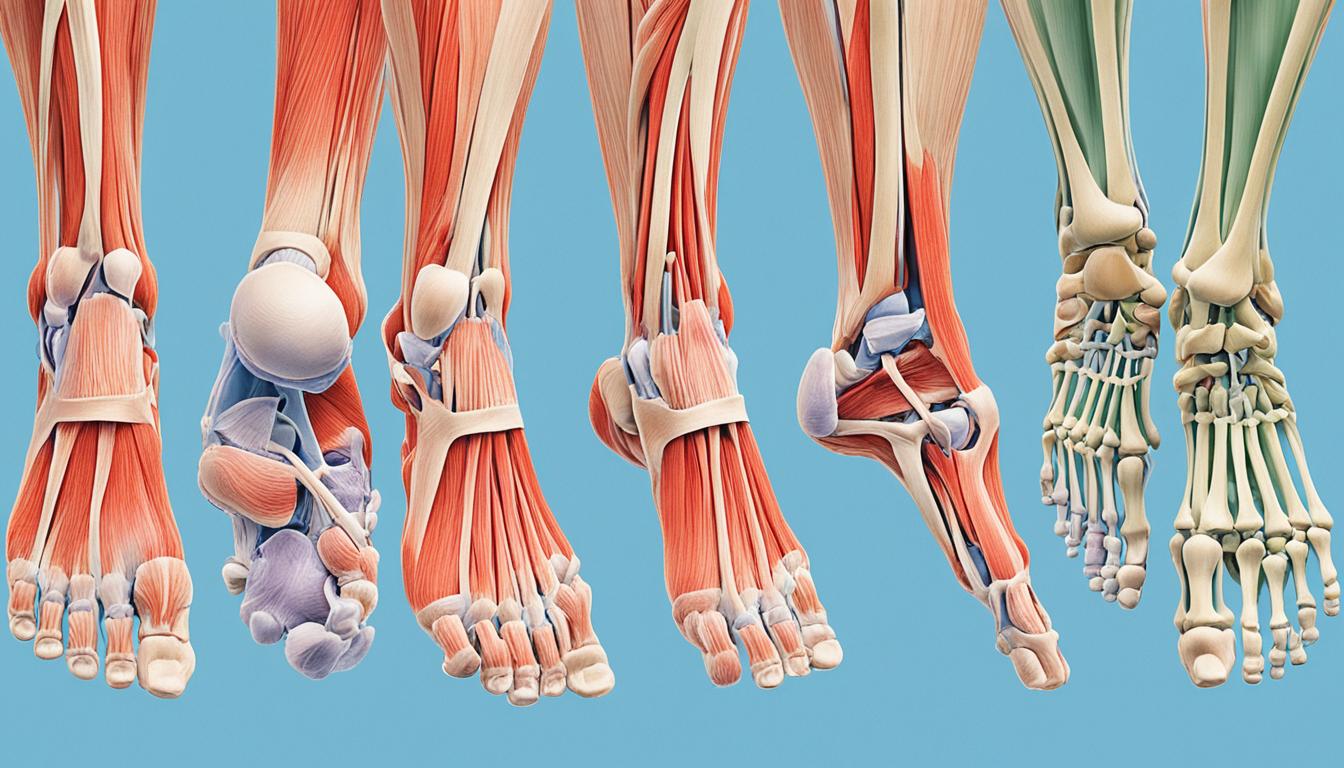Charcot-Marie-Tooth disease (CMT) affects the nerves outside the brain and spinal cord. It causes muscle weakness, foot problems, and a loss of feeling. This disease runs in families and has different causes. These causes include changes in genes like PMP22 and MPZ.
With CMT, muscles can weaken over time. This often starts in the legs and later affects other areas. Diagnosing CMT looks at the signs people show, special nerve tests, and genetic testing.
Currently, there is no cure for CMT. But, scientists are exploring the use of stem cell therapy. They hope it might offer new ways to treat this condition.
Key Takeaways:
- CMT affects nerves outside the brain and spinal cord, leading to issues like muscle weakness and foot changes.
- It is often caused by changes in genes like PMP22 and MPZ.
- To diagnose CMT, doctors use signs of the disease, nerve tests, and genetic tests.
- Stem cell therapy shows hope as a future treatment for CMT.
- More study is needed to learn about the lasting effects and safety of stem cell therapy for CMT.
Symptoms and Diagnosis of Charcot-Marie-Tooth Disease
Charcot-Marie-Tooth disease (CMT) is a condition that affects the nerves. It causes issues like muscle weakness, sensory loss, and foot deformities. It starts in childhood or early adulthood and gets worse over time.
The main sign of CMT is peripheral neuropathy. This means there’s damage to nerves outside the brain and spinal cord. It leads to problems with muscles, feeling, and reflexes.
People with CMT often have muscle weakness in their legs. This can make walking, climbing stairs, and lifting things hard. So, they might need things like braces to get around better.
Sensory loss is another common symptom. It makes it hard for them to sense touch and feel pain. This can mean they have trouble with small movements and are more likely to get hurt.
CMT can also cause foot issues, like high arches. These changes can make walking and standing difficult. They might need special shoes to feel more secure.
To diagnose CMT, doctors do a physical exam and talk about medical history. They might also use tests like electromyography (EMG) to check nerve function. And genetic testing can spot the gene problem causing CMT.
Getting a diagnosis early is key. It helps start treatments that can slow down the condition. This includes using physical therapy and special devices. Early on, it’s also a chance for families to learn more and get support.
Causes and Genetic Aspects of Charcot-Marie-Tooth Disease
Charcot-Marie-Tooth disease comes from family genes. It mainly happens because of mutations in certain genes. These mutations make peripheral nerves not work right. This causes the problems in CMT.
CMT is complex and can pass down in different ways. How it’s inherited depends on the specific gene. It might come from a dominant or recessive gene, or through the X chromosome.
Testing your genes can help find which type of CMT you have. It also shows how CMT might pass on to others. This knowledge is key to treating and living with CMT.
The PMP22 gene is often at the root of CMT. It usually leads to the more common dominant type. MPZ and GJB1 gene changes can also cause CMT. They might lead to CMT in dominant or recessive ways.
But, the MFN2 gene change is rarer. It’s connected to a more severe kind of CMT with worse symptoms and faster effects.
Genes Associated with Charcot-Marie-Tooth Disease
Certain gene mutations cause Charcot-Marie-Tooth disease. These include:
- The PMP22 gene makes peripheral myelin protein 22. When it doesn’t work right, myelin can’t do its job. Myelin protects nerves but if it’s not right, nerves can’t function well.
- The MPZ gene helps make myelin protein zero. This is crucial for healthy myelin. When MPZ genes are wrong, myelin doesn’t work as it should. This leads to CMT symptoms.
- The GJB1 gene mutation messes up connexin 32, an important protein for cell communication. Without this protein, nerve cells can’t send signals properly. This is part of why CMT happens.
- Mutations in the MFN2 gene affect mitofusin 2, important for mitochondria health. Mitochondria are key for cell energy. When they don’t work, nerve cells can die, causing CMT.
Knowing the genetic side of Charcot-Marie-Tooth disease is vital. It helps with diagnosis, what to expect, and how to treat it. Genetic tests give us special details about your CMT. This info helps with care and planning for the future.
Stem Cell Therapy as a Potential Treatment for Charcot-Marie-Tooth Disease
Stem cell therapy is showing promise in treating Charcot-Marie-Tooth disease (CMT). The Regentime procedure uses the patient’s own stem cells. These cells can help regenerate nerves and improve CMT symptoms.
Studies have shown that this therapy can boost muscle strength and feeling in CMT patients. This method might not only improve symptoms but could also be a big step forward in treating this genetic disorder.
Yet, we need more research to know its long-term benefits and safety. Scientists are working hard to learn more about how well this therapy works. Even though it’s still early, many believe it could bring new hope for those with Charcot-Marie-Tooth disease.

